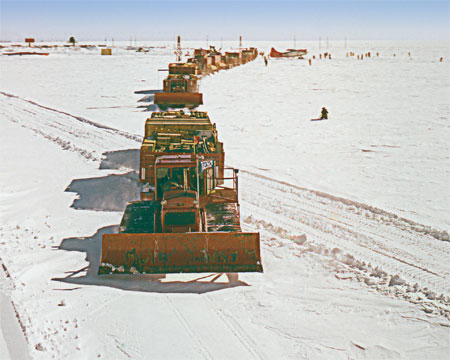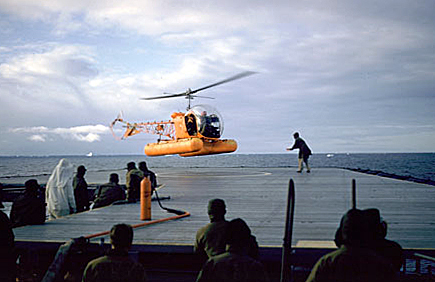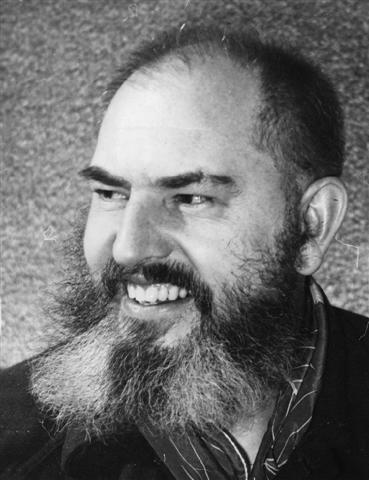IGYHistoric science campaign set the stage for International Polar YearPosted November 20, 2009
The International Polar Year (IPY) When President Dwight Eisenhower declared, in March 1955, that the United States would participate in the upcoming IGY, he assigned the logistical support effort to the U.S. Navy. Operation Deep Freeze, as it was called, was assigned to Task Force 43 under command of Rear Adm. George Dufek, U.S. Navy (Retired), Commander U.S. Naval Support Force Antarctica. 
Photo Credit: Jim Waldron/Antarctic Photo Library
Tractor train departs Little America V to construct Byrd Station.
Aviation support provided by Air Development Squadron Six (VX-6) was commissioned on Jan. 15, 1955. The Naval Mobile Construction Battalion (Special) was commissioned on Aug. 18, 1955. More than 1,800 men were members of Deep Freeze I (DFI, 1955-56) and more than 3,000 men participated in DFII (1956-57). Their mission was to have the Mobile Construction Battalion (Special), better known as Seabees One base, Little America V, was established near Admiral Richard Byrd’s 1929 base on the Ross Ice Shelf. The other base, Williams Air Operating Facility (now known as McMurdo Station During DFII, Little America V personnel traversed 650 miles inland to construct Byrd Station, and personnel from McMurdo constructed South Pole Station Albert Crary was the IGY Deputy Chief Scientist for Antarctica and the chief scientist while working on the Ice from 1957-59. Paul Siple was the scientific leader at South Pole during DFII. Siple was already famous from his first trip to Antarctica as a 19-year-old Eagle Scout, accompanying Adm. Richard Byrd’s 1928 and 1933 expeditions. Three must-read books, to best understand the accomplishments and hardships of this era, are Deep Freeze by Dian Belanger, Innocents on the Ice, by John Behrendt, and 90*South by Paul Siple.
|



For USAP Participants |
For The Public |
For Researchers and EducatorsContact UsU.S. National Science FoundationOffice of Polar Programs Geosciences Directorate 2415 Eisenhower Avenue, Suite W7100 Alexandria, VA 22314 Sign up for the NSF Office of Polar Programs newsletter and events. Feedback Form |



